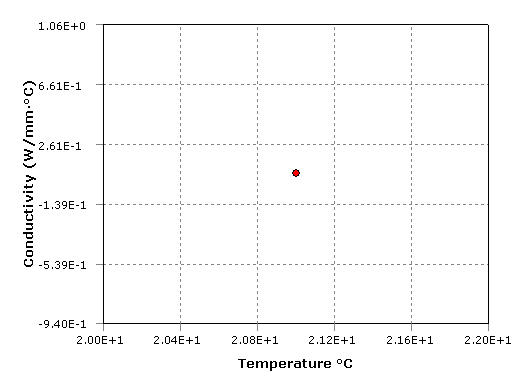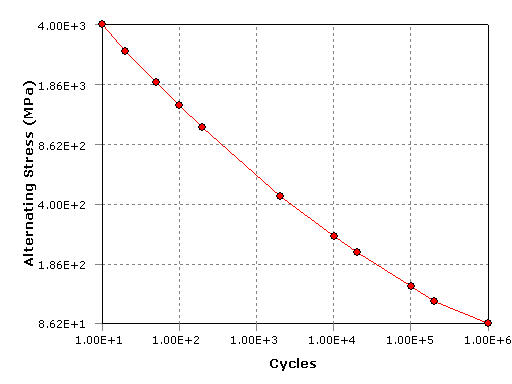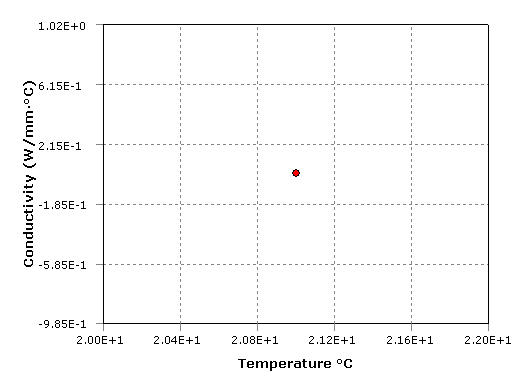![]()
Author
Ivan Podadera Aliseda
Subject
Top cover study
Prepared For
CERN
Project Created
Wednesday, October 15, 2003 at 7:52:37 PM
Project Last Modified
Friday, October 24, 2003 at 9:48:13 AM
Report Created
Friday, October 24, 2003 at 9:49:04 AM
Software Used
Database
C:\RFQ mechanical drawings\COVER (for DS).dsdb
This report documents design and analysis information created and maintained using the ANSYS® engineering software program. Each scenario listed below represents one complete engineering simulation.
Scenario 1
The ANSYS CAE (Computer-Aided Engineering) software program was used in conjunction with 3D CAD (Computer-Aided Design) solid geometry to simulate the behavior of mechanical bodies under thermal/structural loading conditions. ANSYS automated FEA (Finite Element Analysis) technologies from ANSYS, Inc. to generate the results listed in this report.
Each scenario presented below represents one complete engineering simulation. The definition of a simulation includes known factors about a design such as material properties per body, contact behavior between bodies (in an assembly), and types and magnitudes of loading conditions. The results of a simulation provide insight into how the bodies may perform and how the design might be improved. Multiple scenarios allow comparison of results given different loading conditions, materials or geometric configurations.
Convergence and alert criteria may be defined for any of the results and can serve as guides for evaluating the quality of calculated results and the acceptability of values in the context of known design requirements.
The discussions below follow the organization of information in the ANSYS "Explorer" user interface. Each scenario corresponds to a unique branch in the Explorer "Outline". Names emphasized in "double quotes" match preferences set in the user interface.
All values are presented in the "Metric (mm, kg, MPa, °C, s)" unit system.
Notice
Do not accept or reject a design based solely on the data presented in this report. Evaluate designs by considering this information in conjunction with experimental test data and the practical experience of design engineers and analysts. A quality approach to engineering design usually mandates physical testing as the final means of validating structural integrity to a measured precision.
"Model" obtains geometry from the Autodesk® Mechanical Desktop® assembly "C:\RFQ mechanical drawings\COVER (for DS).dwg".
| Name | Material | Bounding Box (mm) | Mass (kg) | Volume (mm³) | Nodes | Elements |
|---|---|---|---|---|---|---|
| "TOP_FLANGE_1" | "Stainless Steel" | 323.0, 15.0, 950.0 | 30.04 | 3.88×106 | 22706 | 11675 |
| "JOINT_SUPPORT_1" | "Stainless Steel" | 90.0, 12.0, 50.0 | 0.31 | 40,500.0 | 370 | 49 |
| "DAMY_FLANGES_1" | "Stainless Steel" | 109.0, 30.0, 109.0 | 0.16 | 20,169.02 | 8508 | 1160 |
| "FLANGE DN100 ISO-K_1,~PART1_1" | "Stainless Steel" | 129.0, 12.0, 129.0 | 0.37 | 47,376.0 | 6934 | 3700 |
| "DAMY2_1" | "Stainless Steel" | 109.0, 30.0, 109.0 | 0.16 | 20,169.02 | 8508 | 1160 |
| "DAMY3_1" | "Stainless Steel" | 109.0, 30.0, 109.0 | 0.16 | 20,169.02 | 8508 | 1160 |
| "DAMY4_1" | "Stainless Steel" | 109.0, 30.0, 109.0 | 0.16 | 20,169.02 | 8508 | 1160 |
| "JOINT2_1" | "Stainless Steel" | 90.0, 12.0, 50.0 | 0.31 | 40,500.0 | 370 | 49 |
| "BLANK2_1" | "Stainless Steel" | 129.0, 12.0, 129.0 | 1.16 | 149,183.63 | 5872 | 3089 |
| "F2_1" | "Stainless Steel" | 129.0, 12.0, 129.0 | 0.37 | 47,376.0 | 6934 | 3700 |
| "BLANK3_1" | "Stainless Steel" | 129.0, 12.0, 129.0 | 1.16 | 149,183.63 | 5872 | 3089 |
| "F3_1" | "Stainless Steel" | 129.0, 12.0, 129.0 | 0.37 | 47,376.0 | 6934 | 3700 |
| "F4_1" | "Stainless Steel" | 129.0, 12.0, 129.0 | 0.37 | 47,376.0 | 6934 | 3700 |
| "BLANK4_1" | "Stainless Steel" | 129.0, 12.0, 129.0 | 1.16 | 149,183.63 | 5872 | 3089 |
| "BLANK FLANGE DN100 ISO-K_1,PART" | "Structural Steel" | 129.0, 12.0, 129.0 | 1.17 | 149,183.63 | 5872 | 3089 |
| Name | Type | Associated Bodies | Normal Stiffness | Scope Mode | Behavior | Formulation | Initial Interface Treatment | Thermal Conductance |
|---|---|---|---|---|---|---|---|---|
| "Contact Region" | Bonded | "JOINT_SUPPORT_1" and "TOP_FLANGE_1" | Program Controlled | Automatic | Symmetric | Pure Penalty | Adjusted to Touch | Program Controlled |
| "Contact Region 2" | Bonded | "DAMY_FLANGES_1" and "TOP_FLANGE_1" | Program Controlled | Automatic | Symmetric | Pure Penalty | Adjusted to Touch | Program Controlled |
| "Contact Region 3" | Bonded | "DAMY2_1" and "TOP_FLANGE_1" | Program Controlled | Automatic | Symmetric | Pure Penalty | Adjusted to Touch | Program Controlled |
| "Contact Region 4" | Bonded | "DAMY3_1" and "TOP_FLANGE_1" | Program Controlled | Automatic | Symmetric | Pure Penalty | Adjusted to Touch | Program Controlled |
| "Contact Region 5" | Bonded | "DAMY4_1" and "TOP_FLANGE_1" | Program Controlled | Automatic | Symmetric | Pure Penalty | Adjusted to Touch | Program Controlled |
| "Contact Region 6" | Bonded | "JOINT2_1" and "TOP_FLANGE_1" | Program Controlled | Automatic | Symmetric | Pure Penalty | Adjusted to Touch | Program Controlled |
| "Contact Region 7" | Bonded | "FLANGE DN100 ISO-K_1,~PART1_1" and "DAMY_FLANGES_1" | Program Controlled | Automatic | Symmetric | Pure Penalty | Adjusted to Touch | Program Controlled |
| "Contact Region 10" | Bonded | "F2_1" and "DAMY2_1" | Program Controlled | Automatic | Symmetric | Pure Penalty | Adjusted to Touch | Program Controlled |
| "Contact Region 11" | Bonded | "F3_1" and "DAMY3_1" | Program Controlled | Automatic | Symmetric | Pure Penalty | Adjusted to Touch | Program Controlled |
| "Contact Region 12" | Bonded | "F4_1" and "DAMY4_1" | Program Controlled | Automatic | Symmetric | Pure Penalty | Adjusted to Touch | Program Controlled |
| "Contact Region 13" | Bonded | "F2_1" and "BLANK2_1" | Program Controlled | Automatic | Symmetric | Pure Penalty | Adjusted to Touch | Program Controlled |
| "Contact Region 14" | Bonded | "F3_1" and "BLANK3_1" | Program Controlled | Automatic | Symmetric | Pure Penalty | Adjusted to Touch | Program Controlled |
| "Contact Region 15" | Bonded | "BLANK4_1" and "F4_1" | Program Controlled | Automatic | Symmetric | Pure Penalty | Adjusted to Touch | Program Controlled |
| "Contact Region 16" | Bonded | "BLANK FLANGE DN100 ISO-K_1,PART" and "FLANGE DN100 ISO-K_1,~PART1_1" | Program Controlled | Automatic | Symmetric | Pure Penalty | Adjusted to Touch | Program Controlled |
"Environment" contains all loading conditions defined for "Model" in this scenario.
Standard Earth Gravity
The following tables list local loads and supports applied to specific geometry.
"Solution" contains the calculated response for "Model" given loading conditions defined in "Environment".
It was selected that the program would choose the solver used in this solution.
| Name | Scope | Orientation | Minimum | Maximum | Alert Criteria |
|---|---|---|---|---|---|
| "Directional Deformation" | Surface(s) on "JOINT_SUPPORT_1" | X Axis | -2.27×10-3 mm | 9.1×10-4 mm | None |
| "Total Deformation" | All Bodies In "Model" | Global | 0.0 mm | 8.79×10-2 mm | None |
| Name | Type | Value |
|---|---|---|
| Modulus of Elasticity | Temperature-Independent | 200,000.0 MPa |
| Poisson's Ratio | Temperature-Independent | 0.3 |
| Mass Density | Temperature-Independent | 7.85×10-6 kg/mm³ |
| Coefficient of Thermal Expansion | Temperature-Independent | 1.2×10-5 1/°C |
| Thermal Conductivity | Temperature-Independent | 0.06 W/mm·°C | Specific Heat | Temperature-Independent | 434.0 J/kg·°C |
| Name | Type | Value |
|---|---|---|
| Tensile Yield Strength | Temperature-Independent | 250.0 MPa |
| Tensile Ultimate Strength | Temperature-Independent | 460.0 MPa |
| Compressive Yield Strength | Temperature-Independent | 250.0 MPa |
| Compressive Ultimate Strength | Temperature-Independent | 0.0 MPa |
 |
 |
| Name | Type | Value |
|---|---|---|
| Modulus of Elasticity | Temperature-Independent | 193,000.0 MPa |
| Poisson's Ratio | Temperature-Independent | 0.31 |
| Mass Density | Temperature-Independent | 7.75×10-6 kg/mm³ |
| Coefficient of Thermal Expansion | Temperature-Independent | 1.36×10-5 1/°C |
| Thermal Conductivity | Temperature-Independent | 0.02 W/mm·°C | Specific Heat | Temperature-Independent | 480.0 J/kg·°C |
| Name | Type | Value |
|---|---|---|
| Tensile Yield Strength | Temperature-Independent | 207.0 MPa |
| Tensile Ultimate Strength | Temperature-Independent | 586.0 MPa |
| Compressive Yield Strength | Temperature-Independent | 207.0 MPa |
| Compressive Ultimate Strength | Temperature-Independent | 0.0 MPa |
 |
The following table lists the files that you need to include for posting this report to an Internet or Intranet web server or for moving this report to a different location. Store all files in the same folder as the HTML page.
This report was originally generated in the folder "C:\RFQ mechanical drawings\ANSYS\Reports\Cover\English\".
| File Name | Description |
|---|---|
| "Cover.htm" | This HTML page. |
| "StyleSheet.css" | The Cascading Style Sheet used to format the HTML page. |
| "CERNlogo.gif" | The Company image displayed at the top of the title page. |
| "AnsCompanyLogo.gif" | The ANSYS image displayed at the top of the title page. |
| "Table0001.jpg" | Table A2.1. "Thermal Conductivity vs. Temperature" Thermal Conductivity vs. Temperature |
| "Table0002.jpg" | Table A2.2. "Alternating Stress vs. Cycles" Alternating Stress vs. Cycles |
| "Table0003.jpg" | Table A3.1. "Thermal Conductivity vs. Temperature" Thermal Conductivity vs. Temperature |